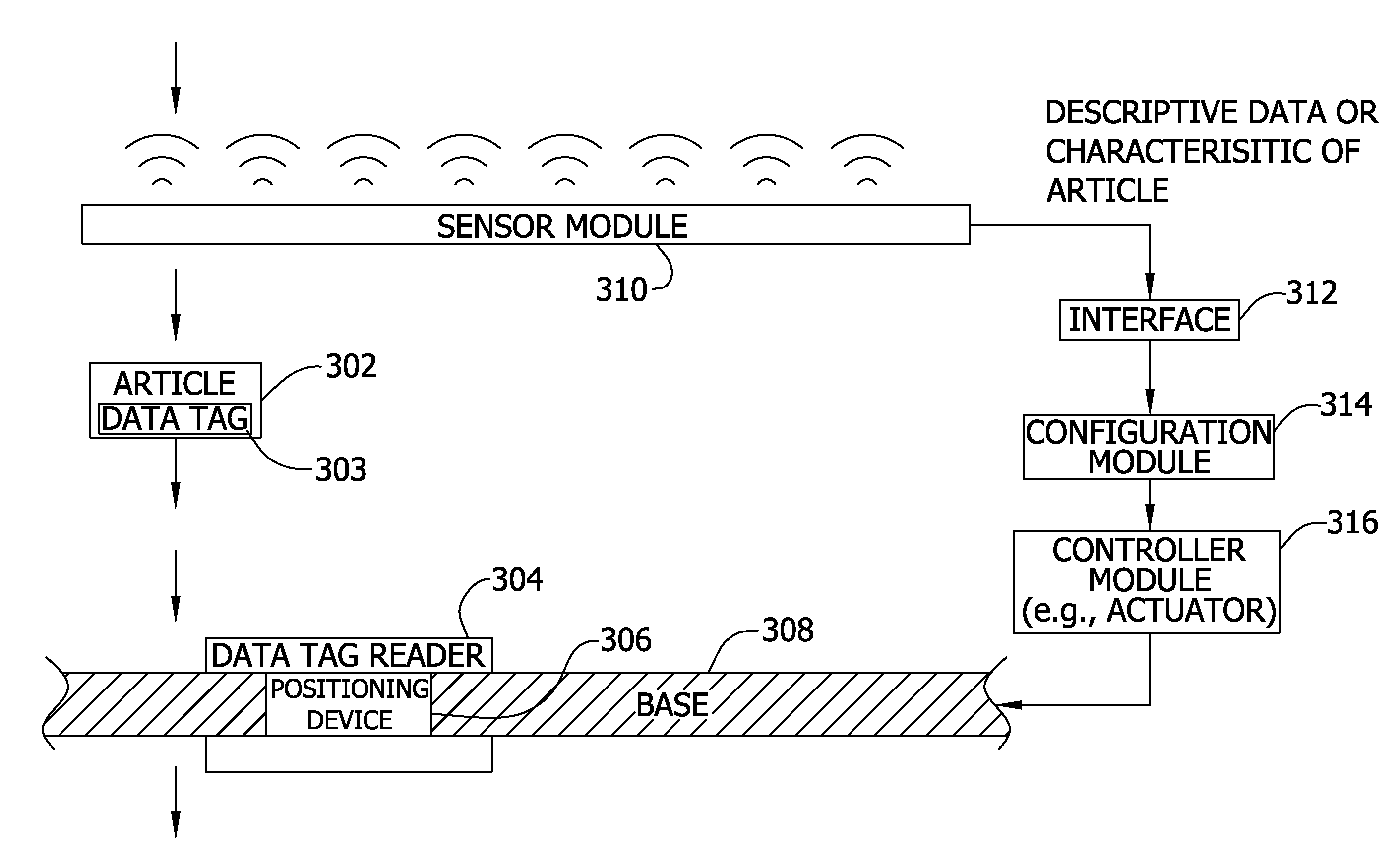Adjusting data tag readers with feed-forward data
a technology of data tag readers and feed-forward data, which is applied in the direction of electrical signalling details, instruments, burglar alarm mechanical actuation, etc., can solve the problems of excessive radio frequency noise and many data tags that cannot be read properly, and achieve the effect of improving the reception of a signal
- Summary
- Abstract
- Description
- Claims
- Application Information
AI Technical Summary
Benefits of technology
Problems solved by technology
Method used
Image
Examples
Embodiment Construction
[0014]In an embodiment of the invention such as shown in FIG. 1, a data tag reader 112 is configured to increase reception of a signal emitted by a data tag 104 and / or increase the response of the data tag 104. The data tag 104, smart tag, or other identification means (e.g., a bar code) may be placed by hand or by machinery on an article 102. The data tag 104 may be placed inside or outside of the article 102. The data tag 104 stores identification information. In one embodiment, the information in the tag is used to assist in routing of the article 102 in the manufacturing process. The data tag reader 112 interrogates the data tag 104 affixed to the article 102.
[0015]A sensor 106 determines a characteristic of the article 102. A configuration module 108 generates a value for a parameter 114 of the data tag reader 112 as a function of the characteristic determined by the sensor 106. A controller 110 adjusts the configurable parameter 114 of the data tag reader 112 as a function of ...
PUM
 Login to View More
Login to View More Abstract
Description
Claims
Application Information
 Login to View More
Login to View More - R&D
- Intellectual Property
- Life Sciences
- Materials
- Tech Scout
- Unparalleled Data Quality
- Higher Quality Content
- 60% Fewer Hallucinations
Browse by: Latest US Patents, China's latest patents, Technical Efficacy Thesaurus, Application Domain, Technology Topic, Popular Technical Reports.
© 2025 PatSnap. All rights reserved.Legal|Privacy policy|Modern Slavery Act Transparency Statement|Sitemap|About US| Contact US: help@patsnap.com



